State of the Art of Telecommunication Systems in Isolated and Constrained Areas
Abstract
1. Introduction
2. Telecommunication Systems in an Isolated and Constrained Environment
- Telecommunication towers
- Optical fiber
- Flying systems
2.1. Telecommunication Towers
2.2. Optical Fiber
- Lower attenuation than conventional cables propagating an electrical signal,
- Higher information rate,
- High propagation speed,
- High immunity to parasites, and
- Almost zero crosstalk.
- Time division multiplexing (TDM)
- Wavelength division multiplexing (WDM)
2.3. The Flying Systems
- The balloons, and
- The drones.
2.3.1. The Balloons
2.3.2. The Drones
3. Comparison of the Solutions
3.1. Criteria for Comparing Solutions
- The power supply of the telecommunication system and the autonomy of the system,
- The acclimatization of the telecommunication system to weather conditions,
- The range of coverage of the telecommunication system,
- The cost of the telecommunication system, and
- Telecommunication system deployment time and permanence.
3.1.1. The Power Supply of the Telecommunication System and the Autonomy of the System
- PV only,
- Wind turbine(s) alone, or
- Hybrid systems (wind turbine, PV, diesel, and batteries).
3.1.2. Adjustment of the Telecommunication System to Weather Conditions
3.1.3. The Range of Coverage of the Telecommunication System
3.1.4. The Cost of the Telecommunication System
3.1.5. Telecommunication System Deployment Time and Permanence
4. Assessment of Solutions Comparisons
5. The Tethered Balloon Solution
5.1. Description of the Captive Balloon
5.2. Balloon Technology: The Physical Structure
5.3. The Telecommunication System
5.4. Ecological Energy Supply
6. Conclusions
- Its resistance to cold and
- Its ability to retain gas, which will have a direct impact on flight autonomy.
Author Contributions
Funding
Institutional Review Board Statement
Informed Consent Statement
Data Availability Statement
Conflicts of Interest
References
- Bartikowski, B.; Laroche, M.; Jamal, A.; Yang, Z. The type-of-internet-access digital divide and the well-being of ethnic minority and majority consumers: A multi-country investigation. J. Bus. Res. 2018, 82, 373–380. [Google Scholar] [CrossRef]
- Larrivée, E. Tomographie Électromagnétique du Pergelisol Près d’Umiujaq au Nunavik. Ph.D. Thesis, Université Laval, Québec, QC, Canada, 2007. Available online: https://corpus.ulaval.ca/jspui/handle/20.500.11794/18775 (accessed on 29 December 2020).
- Van, C. Analyse Multicritère Pour Évaluer Les Options de Chauffage des Communautés Isolées du Nunavik, Mémoire de Master Thesis, Master Science A, ETS Montréal. 2018. Available online: http://espace.etsmtl.ca/2087/1/YAN_Charlotte.pdf (accessed on 19 December 2020).
- Van Deursen, A.J.; van Dijk, J.A. Toward a multifaceted model of Internet access for understanding digital divides: An empirical investigation. Inf. Soc. 2015, 31, 379–391. [Google Scholar] [CrossRef]
- Plan Nord, Développement d’un Projet-Pilote de Valorisation Énergétique des Matières Résiduelles et de Serre Commerciale à Kuujjuaq. 2017. Available online: https://plannord.gouv.qc.ca/fr/salle-de-presse/developpement-dun-projet-pilote-de-valorisation-energetique-matieres-residuelles-de-serre-commerciale-a-kuujjuaq/ (accessed on 18 December 2020).
- Rodon, T. Le Québec Nordique: Enjeux, Espaces et Cultures 1ère Édition. Mooc, Laval University: Québec, QC, Canada, 2017. Available online: https://www.ulaval.ca/les-etudes/mooc-formation-en-ligne-ouverte-a-tous/le-quebec-nordique-enjeux-espaces-et-cultures (accessed on 1 December 2020).
- Nilsson, F.; Moyassari, A.; Bautista, A.; Castro, A.; Arbeloa, I.; Järn, M.; Johansson, K. Modelling anti-icing of railway overhead catenary wires by resistive heating. Int. J. Heat Mass Transf. 2019, 143, 118505. [Google Scholar] [CrossRef]
- Déry, E. Le Conducteur du Train n’a eu Aucune Chance; Le Journal de Québec. March 2016. Available online: https://www.journaldequebec.com/2016/03/30/deraillement-au-nord-de-sept-iles-le-mecanicien-de-locomotive-na-pas-vu-le-danger (accessed on 10 December 2020).
- L’Her, G. Participer et Transformer Les Territoires; NETCOM. 2017. Available online: https://journals.openedition.org (accessed on 15 November 2020).
- MacCourt, Isolement Social des Aînés, Comprendre L’enjeu et Trouver des Solutions. Available online: http://publications.gc.ca/collections/collection_2017/edsc-esdc/Em12-12-1-2016-fra.pdf (accessed on 27 November 2020).
- Stefanini, R.; Degtyar, V.; Jolly, M.; Louette, P. Couverture Mobile: Les Défis des Zones Blanches…et de la 5G. Available online: https://www.google.com/url?sa=t&rct=j&q=&esrc=s&source=web&cd=2&ved=2ahUKEwi-iNj4-fvnAhULrxoKHYqXBdwQFjABegQIAxAB&url=https%3A%2F%2Fwww.avicca.org%2Fdocument%2F16614%2Fdl&usg=AOvVaw2PZwlJQloDdhYnunqFNSAi (accessed on 6 December 2020).
- Roche, E.M.; Townes, W. La prochaine génération de téléphonie mobile (5G) et ses implications (Infrastructure, Réglementation). Netcom Réseaux Commun. Territ. 2018, 32, 139–162. [Google Scholar] [CrossRef]
- Dupé, J.B. Ordonnancement et Gestion des Ressources Pour un Système de Télécommunications Haut Débit: Optimisation de la Bande Passante Satellite. Ph.D. Thesis, Institut National Polytechnique de Toulouse, Toulouse, France, 2015. [Google Scholar]
- Pozar, D.M. Microstrip Antennas, 1st ed.; Wiley: Hoboken, NJ, USA, 1995. [Google Scholar]
- Sahli, A. Filtrage Actif et Contrôle de Puissances: Application Aux Systèmes Photovoltaïques Interconnectés au Réseau. Ph.D. Thesis, Ferhat Abbas Sétif University, El Bez, Algeria, 2018. [Google Scholar]
- Godara, L.C. Handbook of Antennas in Wireless Communications; CRC Press: Boca Raton, FL, USA, 2018. [Google Scholar]
- Pozar, D.M. Microwave and RF Design of Wireless Systems; John Wiley & Sons: Hoboken, NJ, USA, 2000. [Google Scholar]
- Castanet, L.; Lassudrie-Duchesne, P. Propagation des Ondes Radioélectriques à Travers L’atmosphère. Techniques de L’ingénieur. Electronique, 4(E1163). Available online: http://map4gems.centralesupelec.fr/website/template/formulas/physics/electromagnetic-waves/ondes-plasma_atm.pdf (accessed on 23 April 2021).
- Nguyen, T.A. LoRa Localisation in Cities with Neural Networks. Master’s Thesis, Delft University of Technology, Delft, The Netherlands, 2019. [Google Scholar]
- Benboudriou, M.; Kouah, S. Concéption et Réalisation d’un Systémes d’IoT (Internet of Things) Basé Agents Pour le Suivi des Patients Dans le Cadre E-Santé. Master’s Thesis, Faculté des Sciences de la Nature et de la Vie, Setif, Algeria, 2019. [Google Scholar]
- Ortis Pasamontes, E. Comparison Study and Product Development Using Wireless Narrowband Low-Power Wide-Area Network Technologies. 2017. Available online: http://www.diva-portal.org/smash/get/diva2:1205396/FULLTEXT01.pdf (accessed on 23 April 2021).
- Mikhaylov, K.; Petäjäjärvi, J.; Mäkeläinen, M.; Paatelma, A.; Hänninen, T. Extensible modular wireless sensor and actuator network and IoT platform with Plug&Play module connection. In Proceedings of the 14th International Conference on Information Processing in Sensor Networks, Seattle, WA, USA, 13–16 April 2015; pp. 386–387. [Google Scholar]
- Gupta, S.C. Textbook on Optical Fiber Communication and Its Applications; PHI Learning Pvt. Ltd.: New Delhi, India, 2018. [Google Scholar]
- Conseil de la Radiodiffusion et des Télécommunications Canadiennes Rapport D’enquête sur les Services par Satellite: Options de Réseau Haut Débit au Nunavik. Available online: https://crtc.gc.ca/fra/publications/reports/rp150409/rp150409.htm (accessed on 29 December 2020).
- Abas, N.; Kalair, A.R.; Khan, N.; Saleem, M.S. Experimental Study of Optical Fiber Conditions in Service on Data Communication. Nonlinear Opt. Quantum Opt. Concepts Mod. Opt. 2017, 48, 225–235. [Google Scholar]
- Teğin, U.; Rahmani, B.; Kakkava, E.; Borhani, N.; Moser, C.; Psaltis, D. Controlling spatiotemporal nonlinearities in multimode fibers with deep neural networks. APL Photonics 2020, 5, 030804. [Google Scholar] [CrossRef]
- Winzer, P.J. Scaling optical fiber networks: Challenges and solutions. Opt. Photonics News 2015, 26, 28–35. [Google Scholar] [CrossRef]
- Hu, H.; Jopson, R.M.; Gnauck, A.H.; Randel, S.; Chandrasekhar, S. Fiber nonlinearity mitigation of WDM-PDM QPSK/16-QAM signals using fiber-optic parametric amplifiers based multiple optical phase conjugations. Opt. Express 2017, 25, 1618–1628. [Google Scholar]
- Yin, S.; van Veen, D.; Houtsma, V.; Vetter, P. Investigation of Symmetrical Optical Amplified 40 Gbps PAM-4/Duobinary TDM-PON Using 10G Optics and DSP. In Proceedings of the Optical Fiber Communication Conference, Anaheim, CA, USA, 20–24 March 2016; Optical Society of America: New Delhi, India, 2016; p. Tu3C-2. [Google Scholar]
- Centre National d’Études Spatiales. Des Ballons Stratosphériques Pour Quoi Faire? 2017. Available online: https://cnes.fr/fr/des-ballons-stratospheriques-pour-quoi-faire (accessed on 27 December 2020).
- Katikala, S. Google Project Loon. InSight Rivier Acad. J. 2014, 10, 1–6. [Google Scholar]
- Statt, N. Alphabet’s Loon Sets Its Sights on the Satellite Industry, January 2019, Theverge. Available online: https://www.theverge.com/2019/11/21/20976065/alphabet-loon-internet-balloon-remote-parts-amazon-2020-telefonica (accessed on 29 December 2020).
- Catalano, C. Première Lumière du Télescope EUSO-Ballon, Vers la Détection des Rayons Cosmiques Ultra-Énergétique Depuis l’espace. Ph.D. Thesis, Toulouse University, Toulouse, France, 2015. Available online: https://tel.archives-ouvertes.fr/tel-01417298/document (accessed on 23 December 2020).
- Pirovano, A. Conception et Optimisation d’Architectures Réseaux Pour les Systèmes de Communication Aéronautiques. Ph.D. Thesis, École Nationale de l’Aviation Civile, Toulouse, France, 2015. [Google Scholar]
- Google, Facebook et Tesla Viennent en Aide à Porto Rico Pour Pallier la Lenteur de Réaction de Donald Trump. Available online: https://www.novethic.fr/amp/actualite/environnement/climat/isr-rse/pour-pallier-washington-google-facebook-et-tesla-viennent-en-aide-a-porto-rico-144888.html (accessed on 23 April 2021).
- Les Ballons Loon Volent au Secours de Porto Rico. André Bernard, Radio Canada. 2017. Available online: https://ici.radio-canada.ca/nouvelle/1064932/ballons-loon-porto-rico-reseau-cellulaire-couverture-telephone-atmosphere-google-alphabet (accessed on 28 December 2020).
- Remi Décourt, R. Stratobus, les Dernières Évolutions du Chaînon Manquant September 2019. Available online: https://www.futura-sciences.com/sciences/actualites/astronautique-stratobus-dernieres-evolutions-chainon-manquant-drones-satellites-62587/ (accessed on 5 December 2020).
- Murphy, M. Alphabet’s Plan to Bring the Internet to the World Is Ready for the Next Level. December 2018. Available online: https://finance.yahoo.com/news/alphabet-plan-bring-internet-world-120415642.html?guccounter=1&guce_referrer=aHR0cHM6Ly93d3cuZ29vZ2xlLmNvbS8&guce_referrer_sig=AQAAALFfoSJDdhSYaYqIAhdJXYn8png4Sa55hAhdDknUx1IQvY2tpOacxXmnzvjkr_66R0BS4Xm-s7bFIDnv-KKGihwuaZTcU6dxpHHovmN6NAOiJ8uvwQkKRZLT-58NHEaJfy-UJkzxoJBf-KUcKwrUl275opIiMSfhTMO1RPoqT2rK (accessed on 29 December 2020).
- Air&Cosmos—L’envol de Stratobus. Available online: https://www.air-cosmos.com/article/lenvol-de-stratobus-10773 (accessed on 23 April 2021).
- Jeannin, N. La Propagation Dans la Troposphère Pour les Systèmes Spatiaux de Télécommunications à Très Haut Débit en Bandes Ka et Q/V. 2016. Available online: https://hal.archives-ouvertes.fr/hal-01401765/document (accessed on 23 April 2021).
- Histoire du Drone: Un Siècle de Recherches et d’Élaboration. Available online: https://www.studiofly.fr/les-drones-un-siecle-de-recherches-et-d-elaboration/?hcb=1 (accessed on 23 April 2021).
- Lisein, J. Émergence des Drones Civils: Les Différentes Plate-Formes, Opportunités et Défis à Relever. 2015. Available online: https://orbi.uliege.be/bitstream/2268/188136/1/Presentation_congresTunis_JL_sansAnim.pdf (accessed on 23 April 2021).
- Available online: http://nouvelles.hydroquebec.com/media/filer_private/2017/11/03/2016v124_hq_promodrone.jpg (accessed on 23 April 2021).
- Vas, E.; Lescroël, A.; Duriez, O.; Boguszewski, G.; Grémillet, D. Approaching birds with drones: First experiments and ethical guidelines. Biol. Lett. 2015, 11, 20140754. [Google Scholar] [CrossRef]
- Zhang, J.; Hu, J.; Lian, J.; Fan, Z.; Ouyang, X.; Ye, W. Seeing the forest from drones: Testing the potential of lightweight drones as a tool for long-term forest monitoring. Biol. Conserv. 2016, 198, 60–69. [Google Scholar] [CrossRef]
- Boudguiga, O. Commande à Saturation Pour le Contrôle de la Position d’un Robot Volant de Type Quadrotor. Ph.D. Thesis, École de Technologie Supérieure, Montreal, QC, Canada, 2016. [Google Scholar]
- Kardasz, P.; Doskocz, J.; Hejduk, M.; Wiejkut, P.; Zarzycki, H. Drones and possibilities of their using. J. Civ. Environ. Eng. 2016, 6, 1–7. [Google Scholar] [CrossRef]
- ISS Aerospace Dévoile un Drone à Hydrogène Pour la Surveillance Environnementale. Available online: https://www.clubic.com/drone/actualite-869274-iss-aerospace-drone-hydrogene-surveillance-environnementale.html?hcb=1 (accessed on 23 April 2021).
- Antoine Bousquet, A. The Eye of War: Military Perception from the Telescope to the Drone; University of Minnesota Press: Minneapolis, MN, USA, 2018; ISBN 978-1-4529-5804-0. [Google Scholar]
- Yang, G.; Lin, X.; Li, Y.; Cui, H.; Xu, M.; Wu, D.; Redhwan, S.B. A telecom perspective on the Internet of drones: From LTE-advanced to 5G. arXiv 2018, arXiv:1803.11048.2016. [Google Scholar]
- Available online: http://www.thalesgroup.com/en/countries/europe/united-kingdom/markets-we-operate/defence/air-systems-uk/isr-air/watchkeeper (accessed on 23 April 2021).
- World Energy Ressources, World Energy Resources Council. 2016. Available online: https://www.worldenergy.org/assets/images/imported/2016/10/World-Energy-Resources-Full-report-2016.10.03.pdf (accessed on 19 October 2020).
- Issa, M.; Ibrahim, H.; Lepage, R.; Ilinca, A. A Review and Comparison on Recent Optimization Methodologies for Diesel Engines and Diesel Power Generators. J. Power Energy Eng. 2019, 7, 31–49. [Google Scholar] [CrossRef]
- Darras, L.; Turpin, J.; Jenatton, L.; Mariscal, A. Utilisation d’une pile à Combustible au Méthanol en Complément de L’énergie Solaire Pour les Systèmes D’acquisition en Milieu Naturel. 2018. Available online: https://hal.archives-ouvertes.fr/hal-01928269/ (accessed on 23 April 2021).
- Qamar, S.B.; Janajreh, I. Renewable energy sources for isolated self-sufficient microgrids: Comparison of solar and wind energy for UAE. Energy Proc. 2016, 103, 413–418. [Google Scholar] [CrossRef]
- Motahhir, S.; El Ghzizal, A.; Derouich, A. Modélisation et Commande d’un Panneau Photovoltaïque Dans L’environnement PSIM. 2015. Available online: https://hal.archives-ouvertes.fr/hal-01351493/ (accessed on 23 April 2021).
- Casula, S.; Sanna, C.; Gawronska, M.; Damiano, A. Surface polarization effect and recovery process of crystalline-Si photovoltaic modules. In Proceedings of the 2016 IEEE International Conference on Renewable Energy Research and Applications (ICRERA), Birmingham, UK, 20–23 November 2016; pp. 364–369. [Google Scholar]
- Adar, M.; Mabrouki, M.; Bennouna, A.; Chebak, A. Production study of a grid connected PV plant. In Proceedings of the 2016 International Renewable and Sustainable Energy Conference (IRSEC), Marrakech, Morocco, 14–17 November 2016; pp. 116–120. [Google Scholar]
- Damien Ernst, D. Les Batteries Vont Bouleverser Notre Quotidien, Les Échos. January 2017. in Press. Available online: https://www.lecho.be/entreprises/energie/les-batteries-vont-bouleverser-notre-quotidien/9848658.html (accessed on 3 October 2020).
- Fathima, A.H.; Palanisamy, K. Optimization in microgrids with hybrid energy systems–A review. Renew. Sustain. Energy Rev. 2015, 45, 431–446. [Google Scholar] [CrossRef]
- Corral-Rodriguez, R. Systèmes Hybrides Éolien-Diesel en Climat Froid: Le cas de la Base Antarctique Jubany. Master’s Thesis, University du Québec a Rimouski, Rimouski, QC, Canada, 2012. [Google Scholar]
- Kuang, Y.; Zhang, Y.; Zhou, B.; Li, C.; Cao, Y.; Li, L.; Zeng, L. A review of renewable energy utilization in islands. Renew. Sustain. Energy Rev. 2016, 59, 504–513. [Google Scholar] [CrossRef]
- Lekene, R. Utilisation des Énergies Renouvelables Pour L’alimentation Électrique d’une Station de Télécommunications en Site Isolé. Ph.D. Thesis, Université du Québec à Rimouski, Rimouski, QC, Canada, 2018. [Google Scholar]
- Patil, S.M.; Baig, M.M. Survey on Creating ZigBee Chain Reaction Using IoT. Int. J. Sci. Res. Comput. Sci. Eng. Inf. Technol. 2018, 3, 545–549. [Google Scholar]
- ZDNet. What Is the Internet of Things: Everything You Need to Know about the Iot Right Now, Internet of Things. 2020. Available online: https://www.zdnet.com/article/what-is-the-internet-of-things-everything-you-need-to-know-about-the-iot-right-now/ (accessed on 5 December 2020).
- Semtech, A.; Basics, M. AN1200. 22. LoRa Modulation Basics. 2015. Available online: https://www.frugalprototype.com/wp-content/uploads/2016/08/an1200.22.pdf (accessed on 23 April 2021).
- Bardyn, J.P.; Melly, T.; Seller, O.; Sornin, N. IoT: The era of LPWAN is starting now. In Proceedings of the ESSCIRC Conference 2016: 42nd European Solid-State Circuits Conference, Lausanne, Switzerland, 12–15 September 2016; pp. 25–30. [Google Scholar]
- Bouallegue, M. Protocoles de Communication et Optimisation de L’énergie Dans Les Réseaux de Capteurs Sans Fil. Ph.D. Thesis, Université Bretagne Loire, Rennes, France, 2016. [Google Scholar]
- Toffanin, R.; Ge, H.; Athienitis, A. Integration of Building Integrated Photovoltaic/Thermal (BIPV/T) System with Heat Recovery Ventilators for Improved Performance under Extreme Cold Climates. In Proceedings of the Cold Climate HVAC Conference, Kiruna, Sweden, 12–15 March 2018; Springer: Cham, Germany, 2018; pp. 97–110. [Google Scholar]
- Meijer, G.C.; Wang, G.; Heidary, A. Smart Temperature Sensors and Temperature Sensor Systems. In Smart Sensors and MEMs; Woodhead Publishing: Cambridge, UK, 2018; pp. 57–85. Available online: https://www.researchgate.net/publication/323622487_Smart_temperature_sensors_and_temperature_sensor_systems (accessed on 23 April 2021).
- Gu, W.; Aminikashani, M.; Deng, P.; Kavehrad, M. Impact of multipath reflections on the performance of indoor visible light positioning systems. J. Lightwave Technol. 2016, 34, 2578–2587. [Google Scholar] [CrossRef]
- Agence spatiale Canadienne. A Propos des Ballons Stratosphériques. 2018. Available online: www.asc-csa.gc.ca/fra/sciences/ballons/a-propos-des-ballons-stratospheriques.asp (accessed on 17 December 2020).
- Petitjean, F.; Rio, G.; Hamdani, A.; Soors, X. Simulation du comportement de ballons stratosphériques ouverts. In Proceedings of the CSMA 2015—12ème Colloque National en Calcul des Structures, Giens, France, 18–22 May 2015. [Google Scholar]
- Chen, C.; Ratasuk, R.; Ghosh, A. Downlink performance analysis of LTE and Wi-Fi coexistence in unlicensed bands with a simple listen-before-talk scheme. In Proceedings of the 2015 IEEE 81st Vehicular Technology Conference (VTC Spring), Glasgow, UK, 18–22 May 2015; pp. 1–5. [Google Scholar]
- Abdoli, J.; Jia, M.; Ma, J. Filtered OFDM: A new waveform for future wireless systems. In Proceedings of the 2015 IEEE 16th International Workshop on Signal Processing Advances in Wireless Communications (SPAWC), Stockholm, Sweden, 28 June–1 July 2015; pp. 66–70. [Google Scholar]
- Han, K.; Huang, K. Wirelessly powered backscatter communication networks: Modeling, coverage, and capacity. IEEE Trans. Wirel. Commun. 2017, 16, 2548–2561. [Google Scholar] [CrossRef]
- Connect People Everywhere. 2015. Available online: https://www.loon.com (accessed on 28 December 2020).
- Available online: https://computer.howstuffworks.com/google-loon.htm (accessed on 23 April 2021).
- Louvel, S. Des Ballons Pour le Climat. La Météorologie. 2015. Available online: http://documents.irevues.inist.fr/bitstream/handle/2042/57848/meteo_2015_91_2.pdf (accessed on 25 December 2020).
- Sohrabi, K.; Gao, J.; Ailawadhi, V.; Pottie, G.J. Protocols for self-organization of a wireless sensor network. IEEE Pers. Commun. 2000, 7, 16–27. [Google Scholar] [CrossRef]
- The Things Network. 2017. Available online: https://www.thethingsnetwork.org (accessed on 24 December 2020).
- Lee, I.; Lee, K. The Internet of Things (IoT): Applications, investments, and challenges for enterprises. Bus. Horiz. 2015, 58, 431–440.77. [Google Scholar] [CrossRef]
- Mikhaylov, K.; Petajajarvi, J. Design and implementation of the plug&play enabled flexible modular wireless sensor and actuator network platform. Asian J. Control 2019. [Google Scholar] [CrossRef]
- Vejlgaard, B.; Lauridsen, M.; Nguyen, H.; Kovács, I.Z.; Mogensen, P.; Sorensen, M. Coverage and capacity analysis of sigfox, lora, gprs, and nb-iot. In Proceedings of the 2017 IEEE 85th Vehicular Technology Conference, Sydney, Australia, 4–7 June 2017; pp. 1–5. [Google Scholar]
- Lee, C.H.; Kim, D.R.; Cho, I.S.; William, N.; Wang, Q.; Zheng, X. Peel-and-stick: Fabricating thin film solar cell on universal substrates. Sci. Rep. 2012, 2, 1–4. [Google Scholar] [CrossRef] [PubMed]
- Available online: https://bindousr.com/product/flex35-105w-5x7/ (accessed on 23 April 2021).

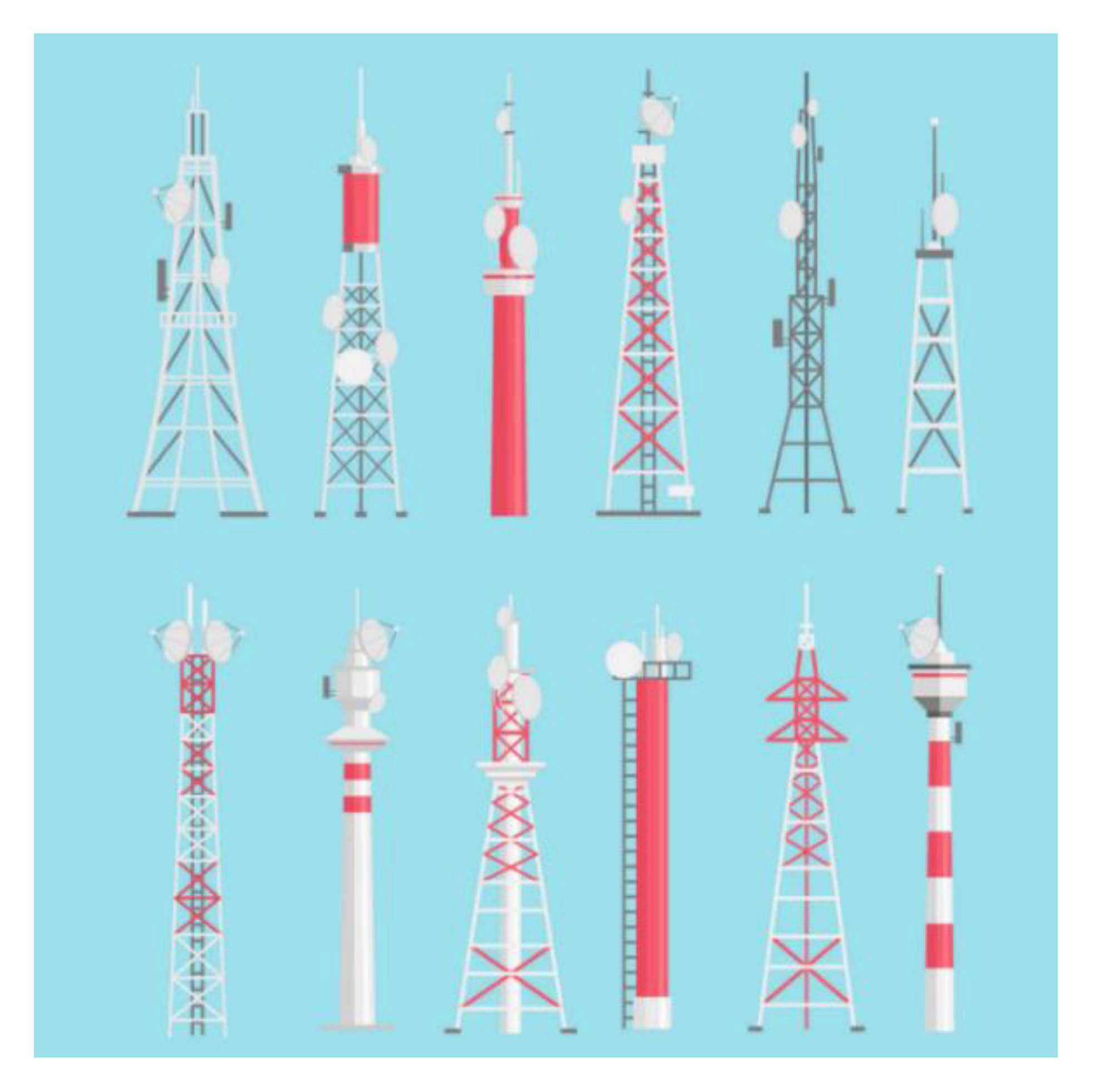
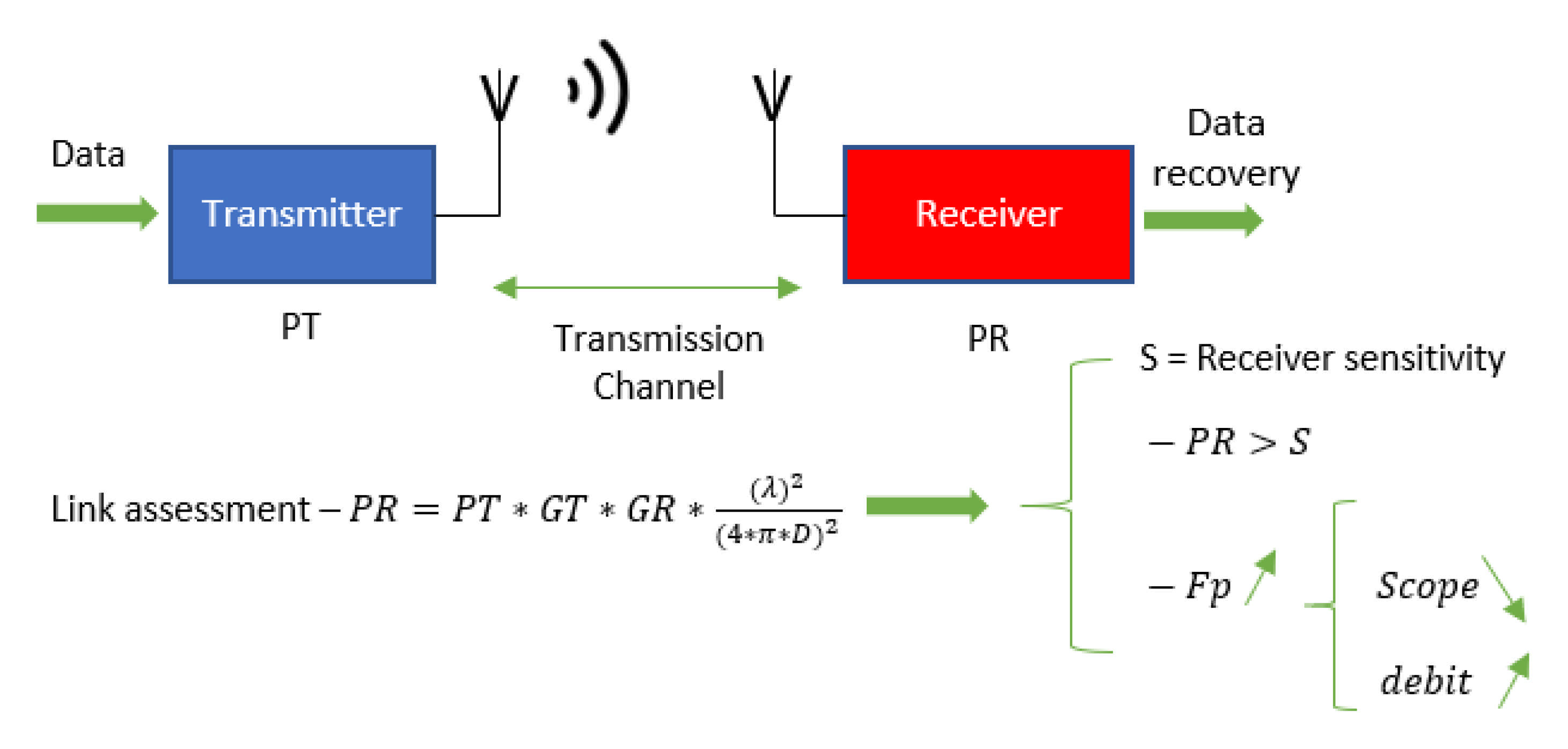
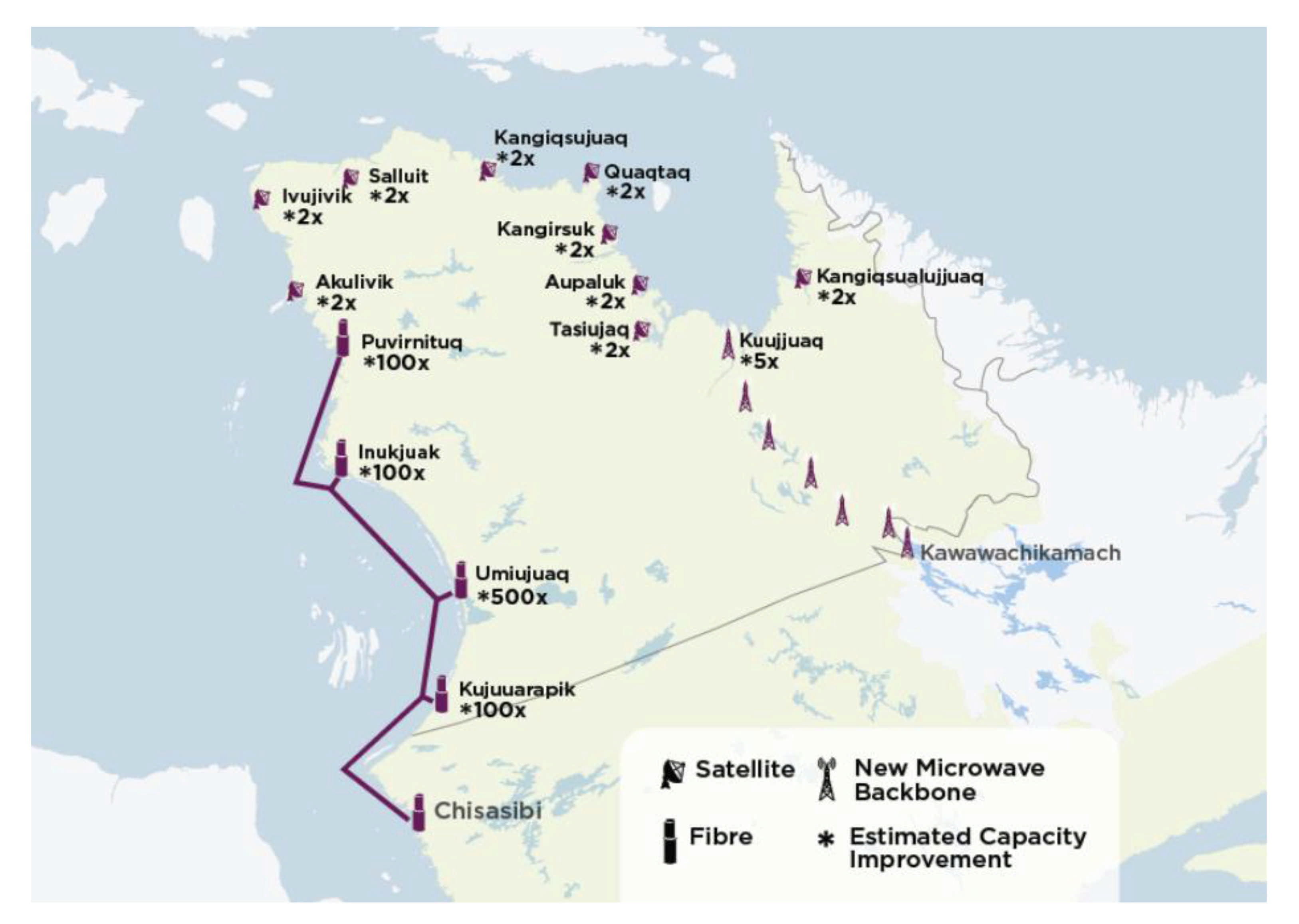
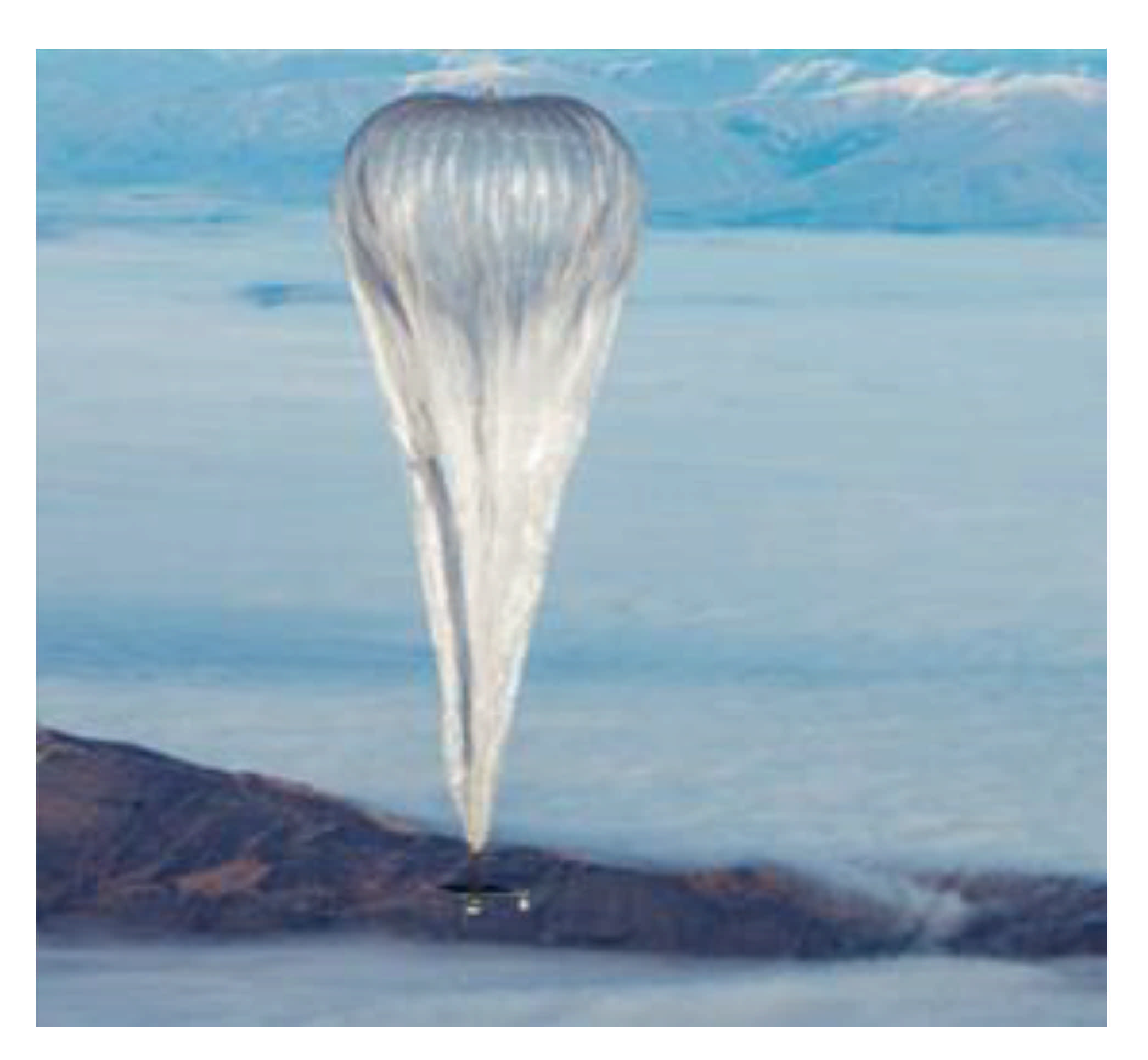
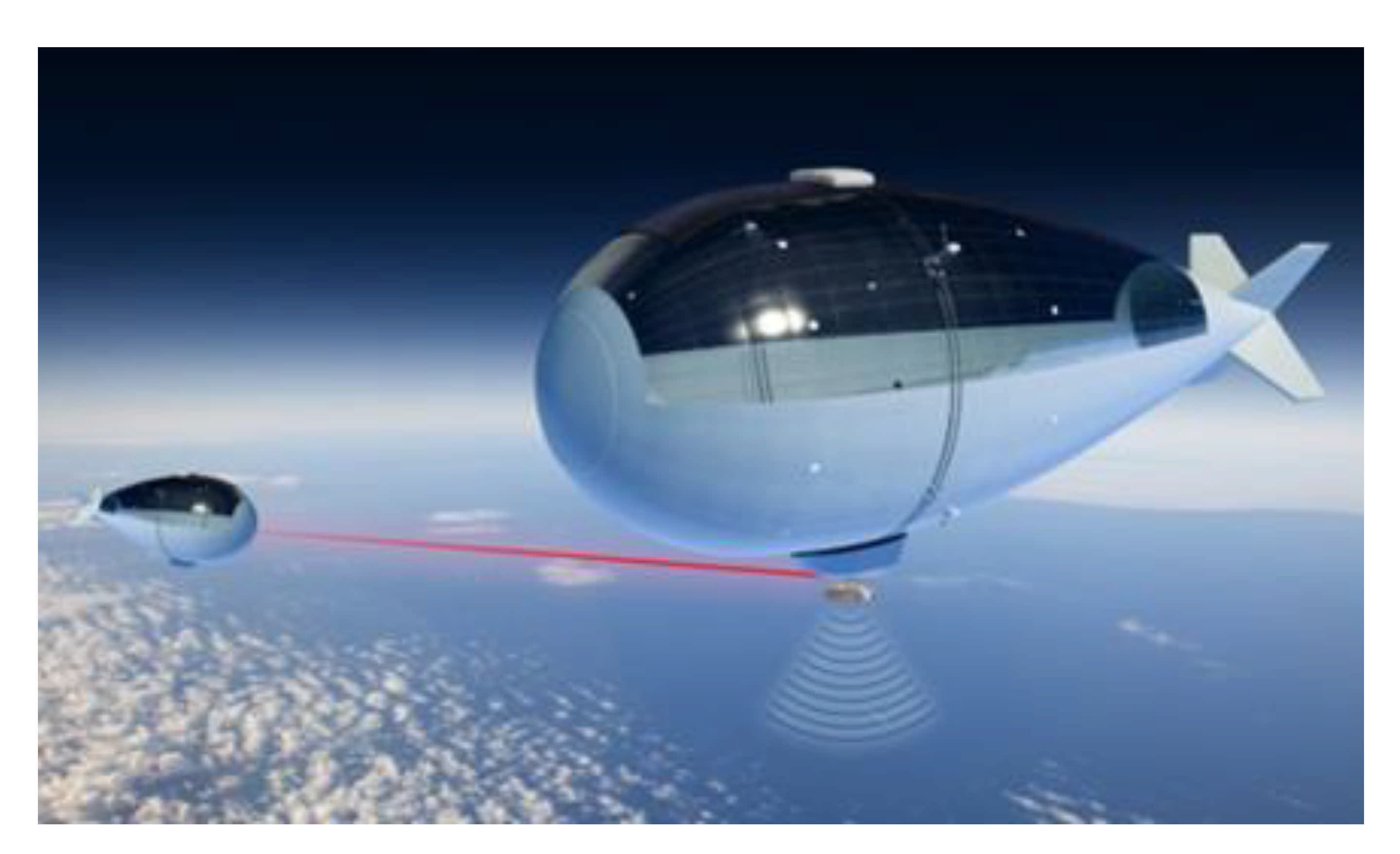
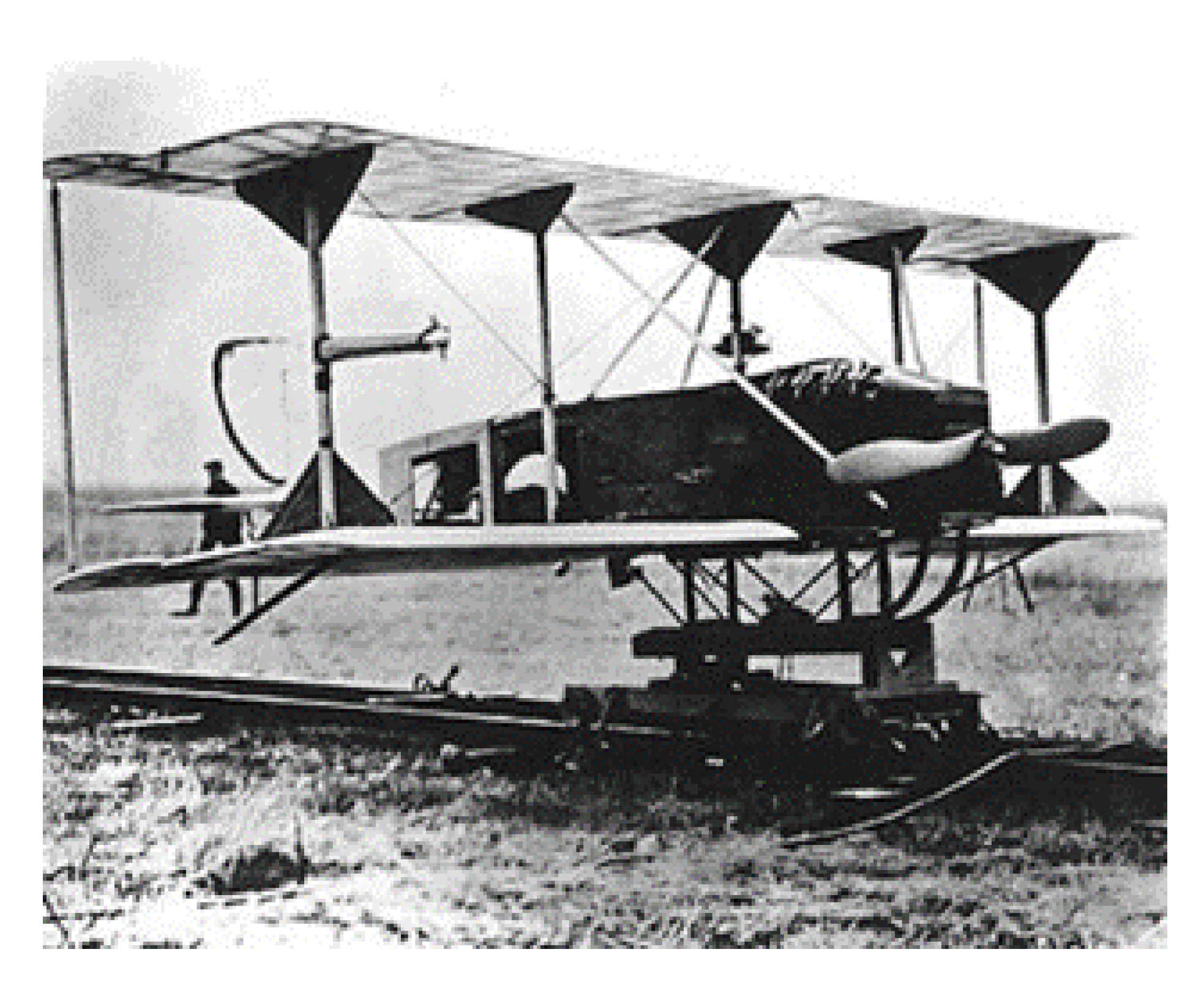
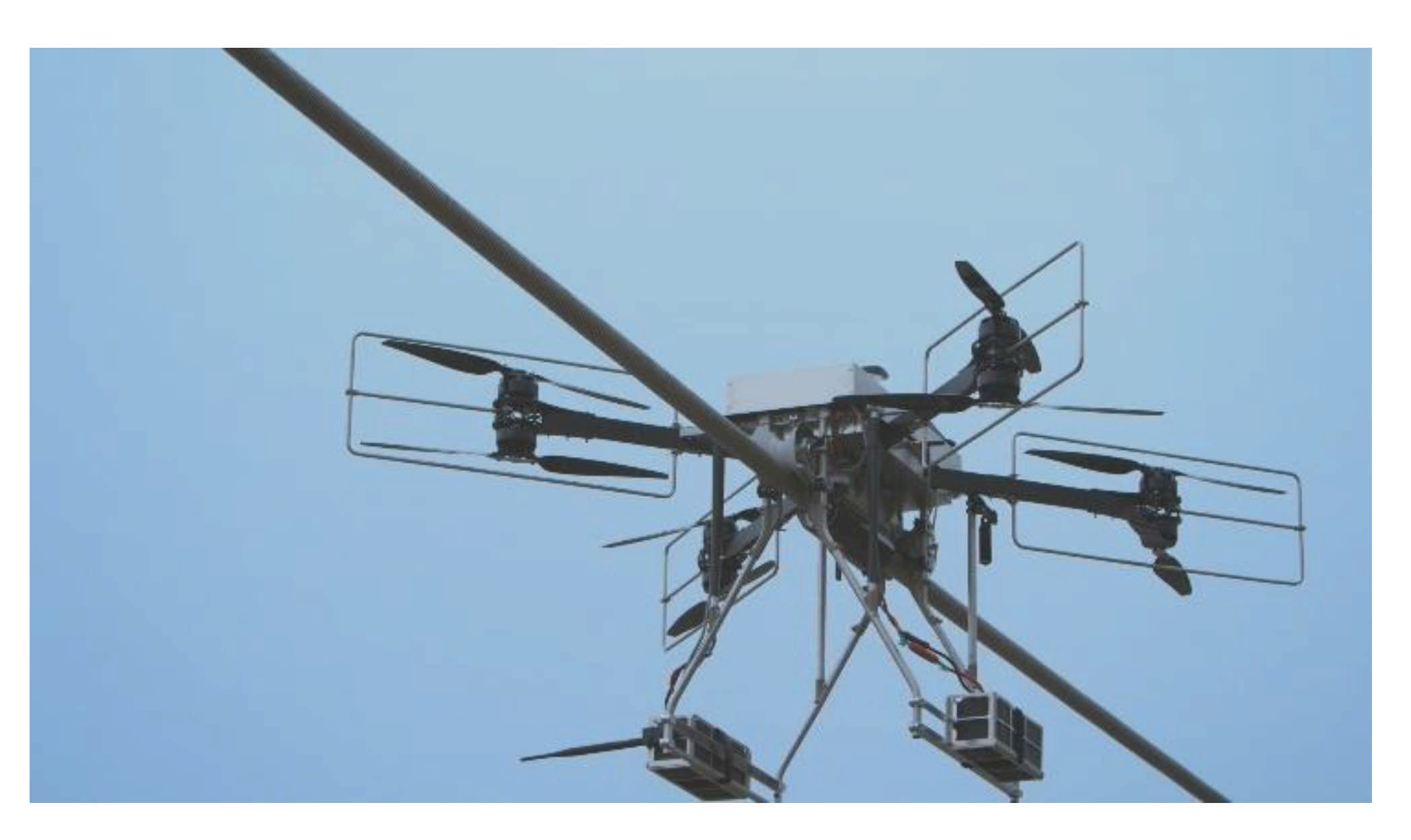
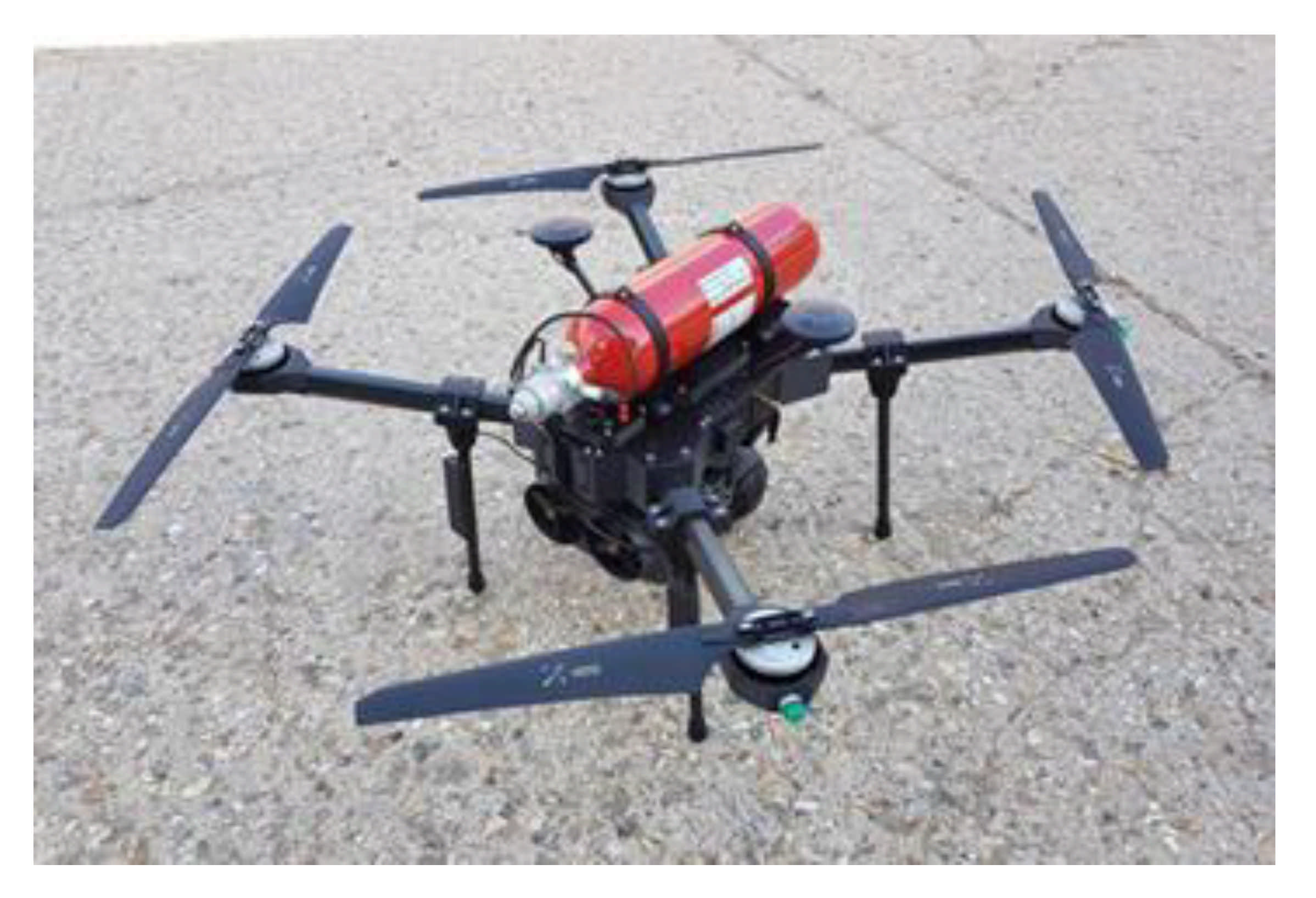
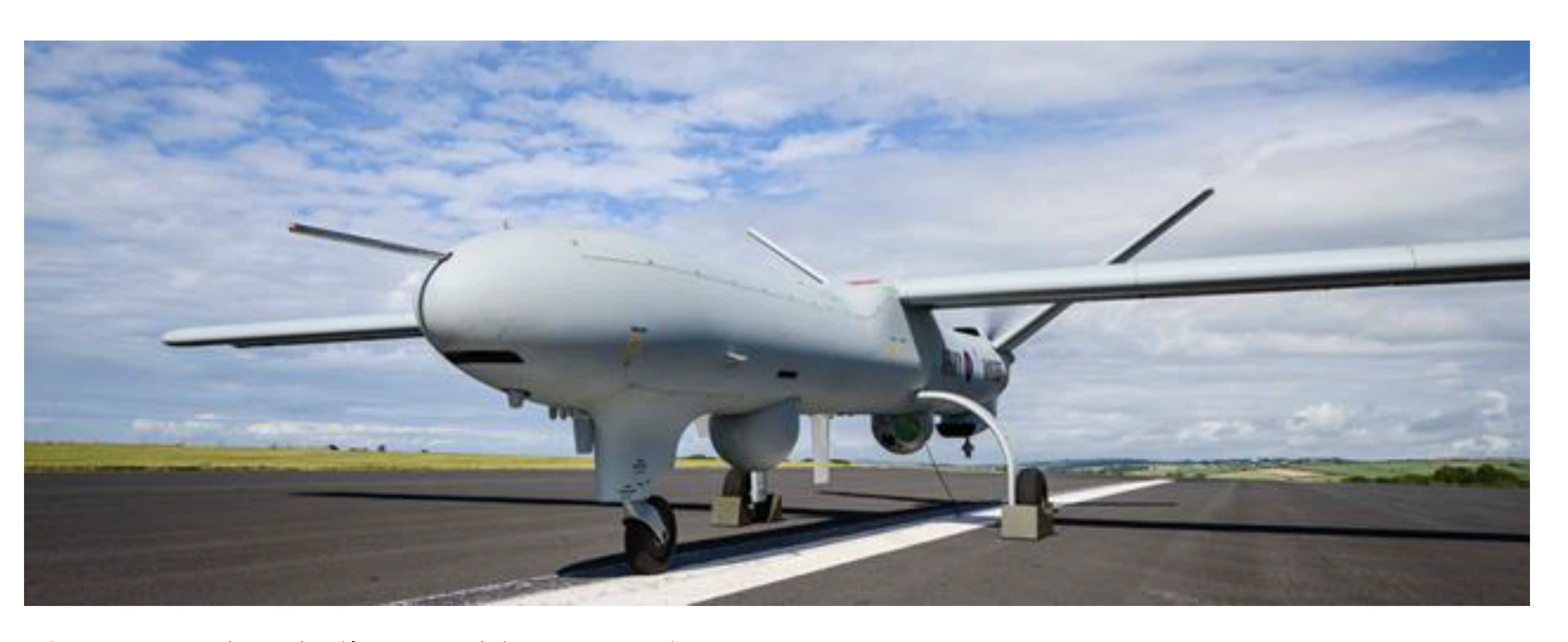
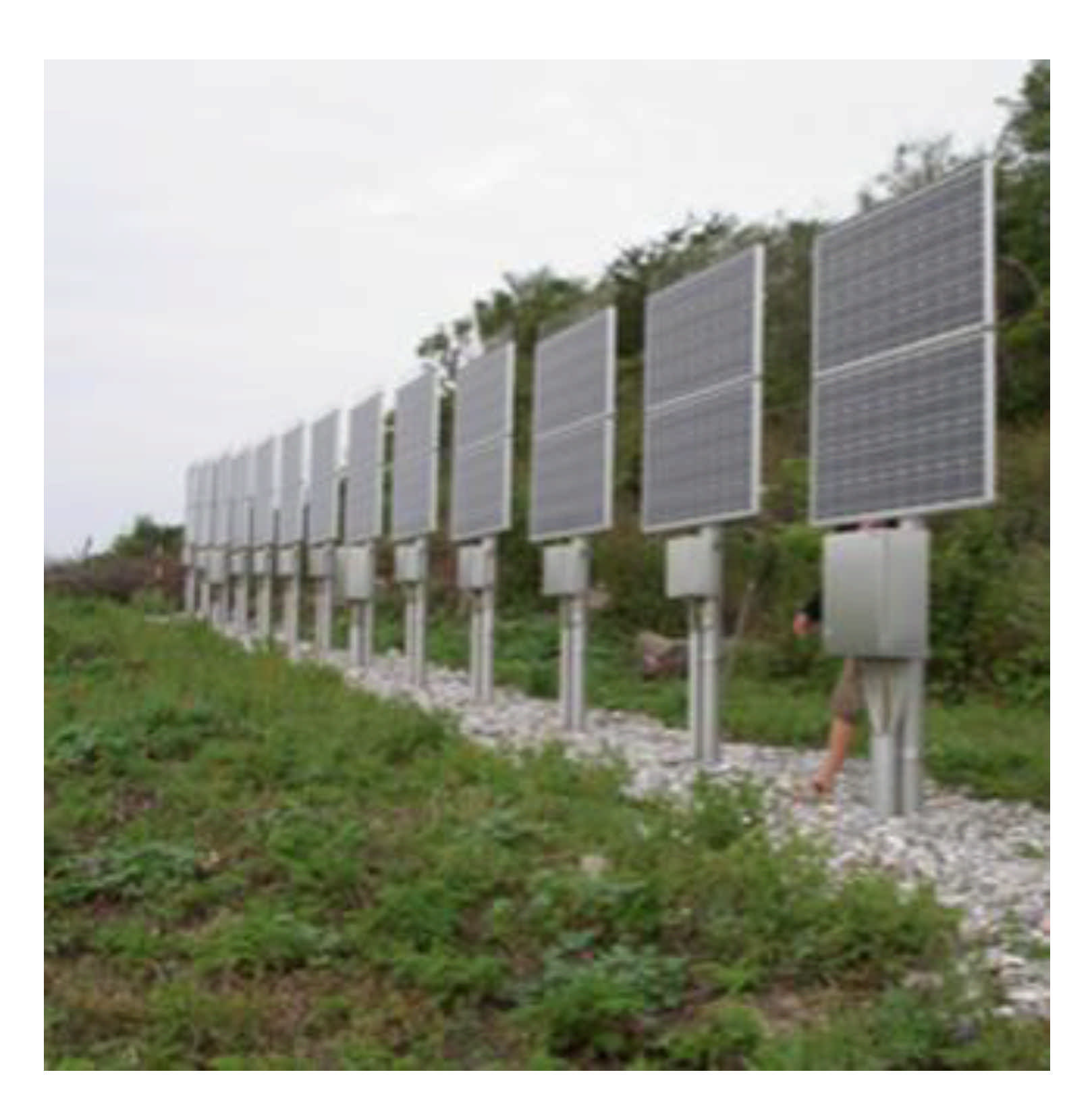
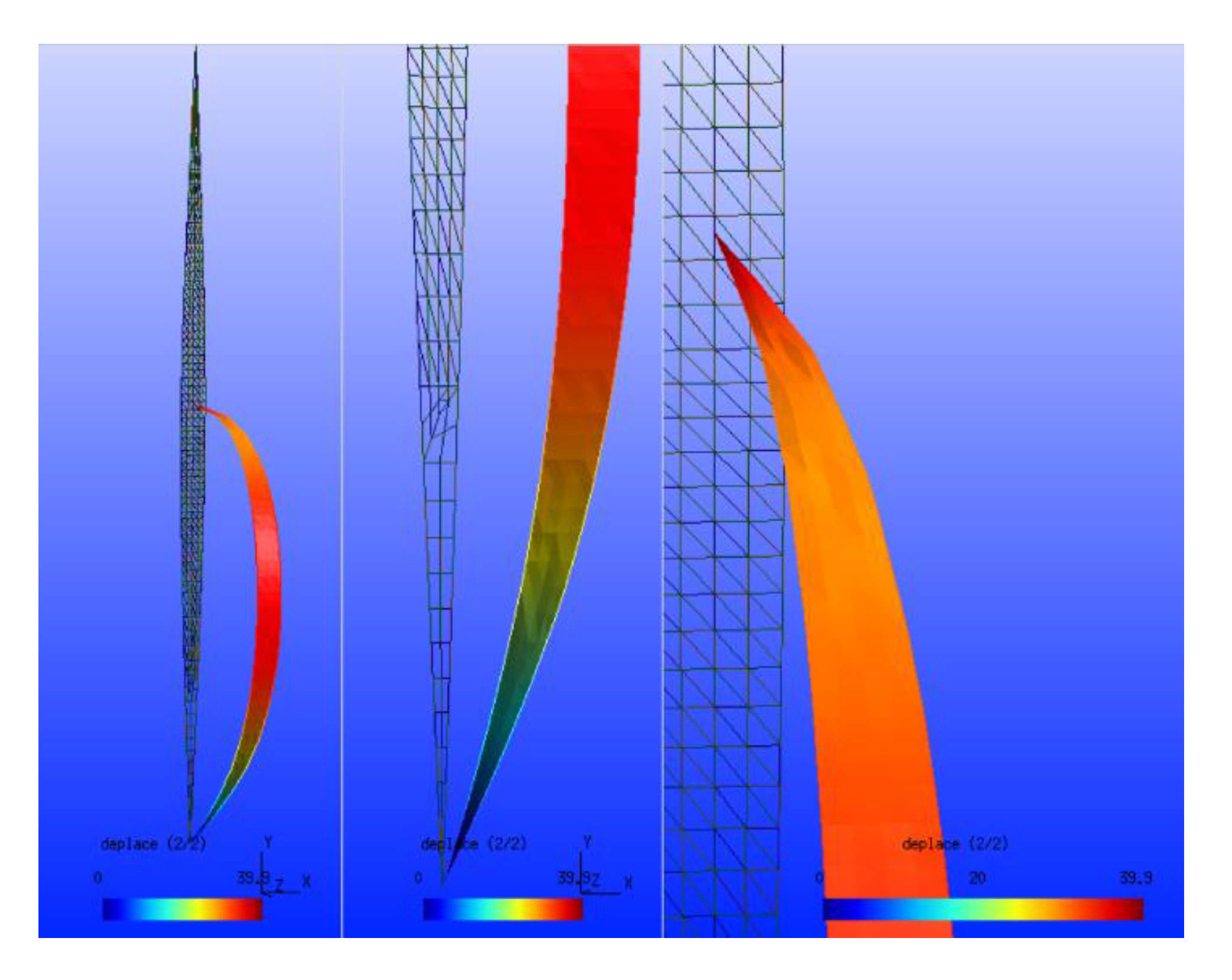
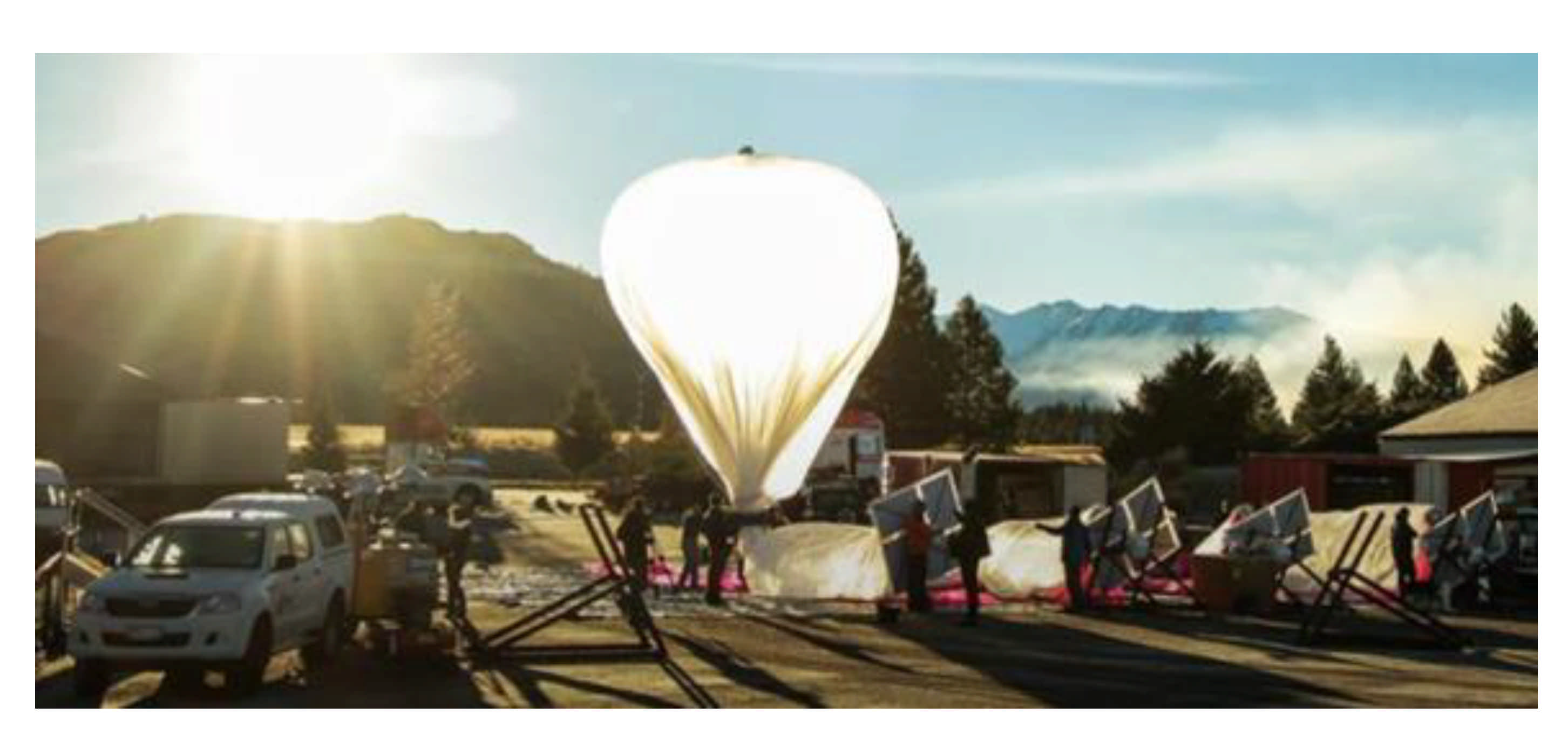
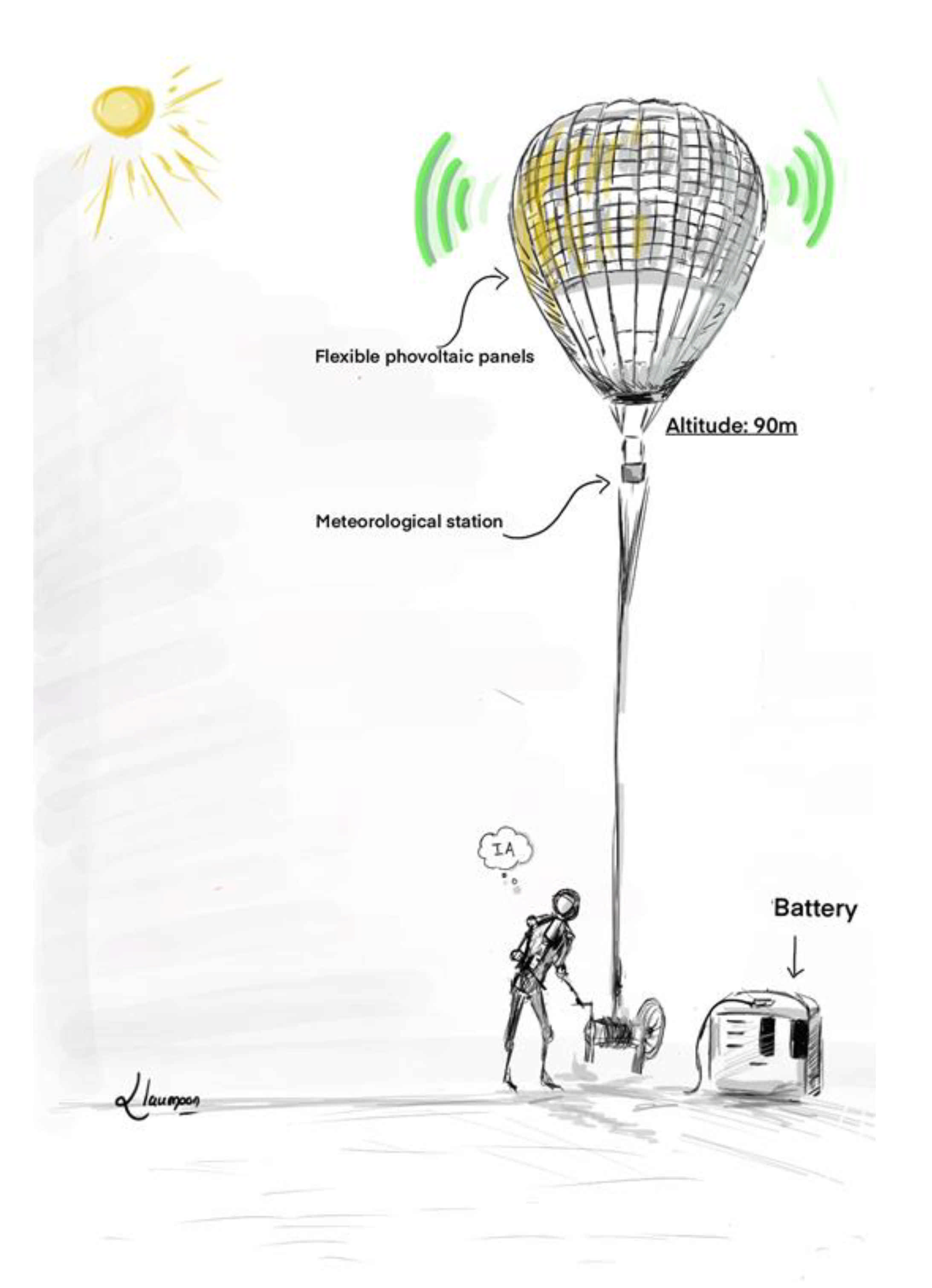
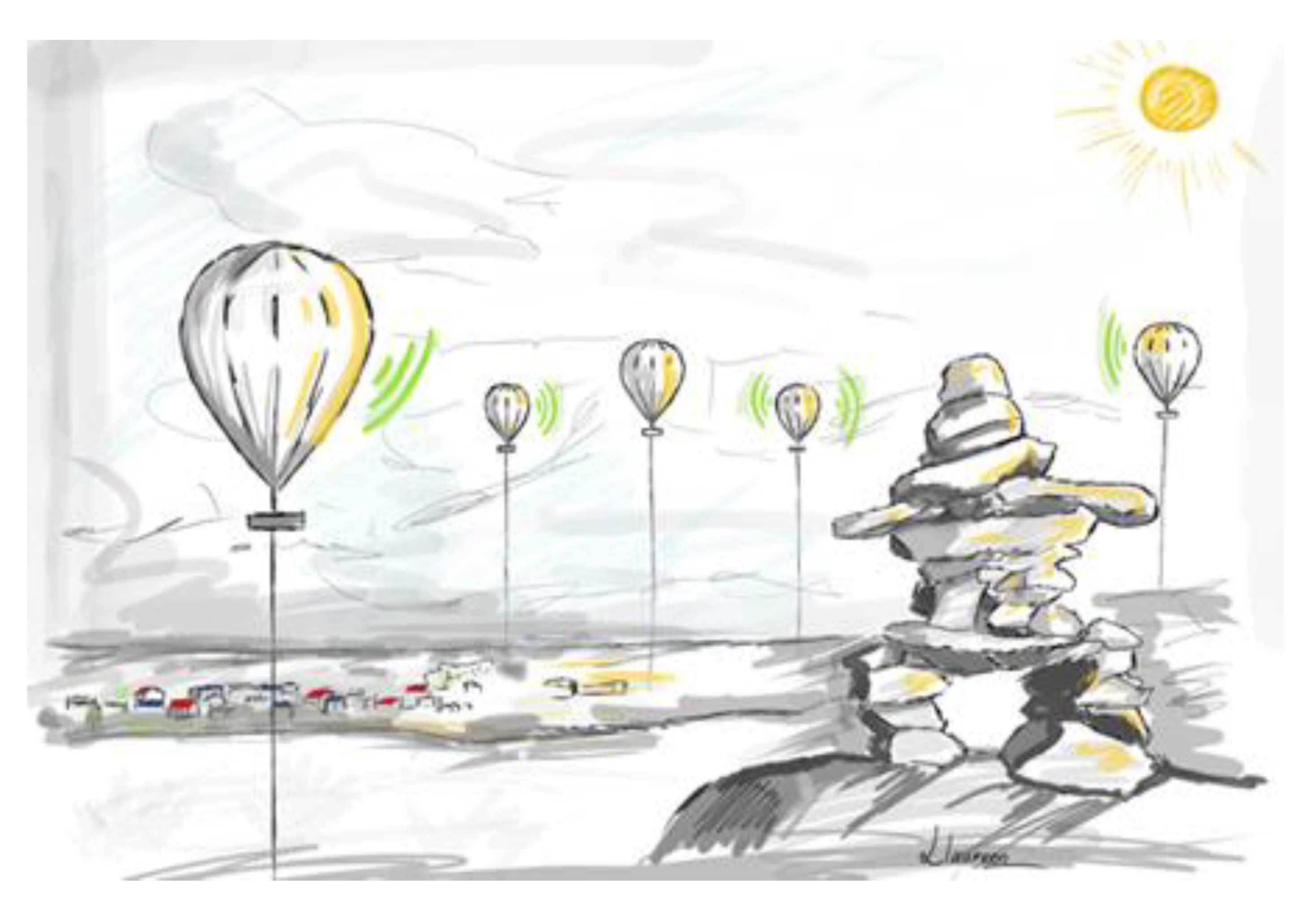
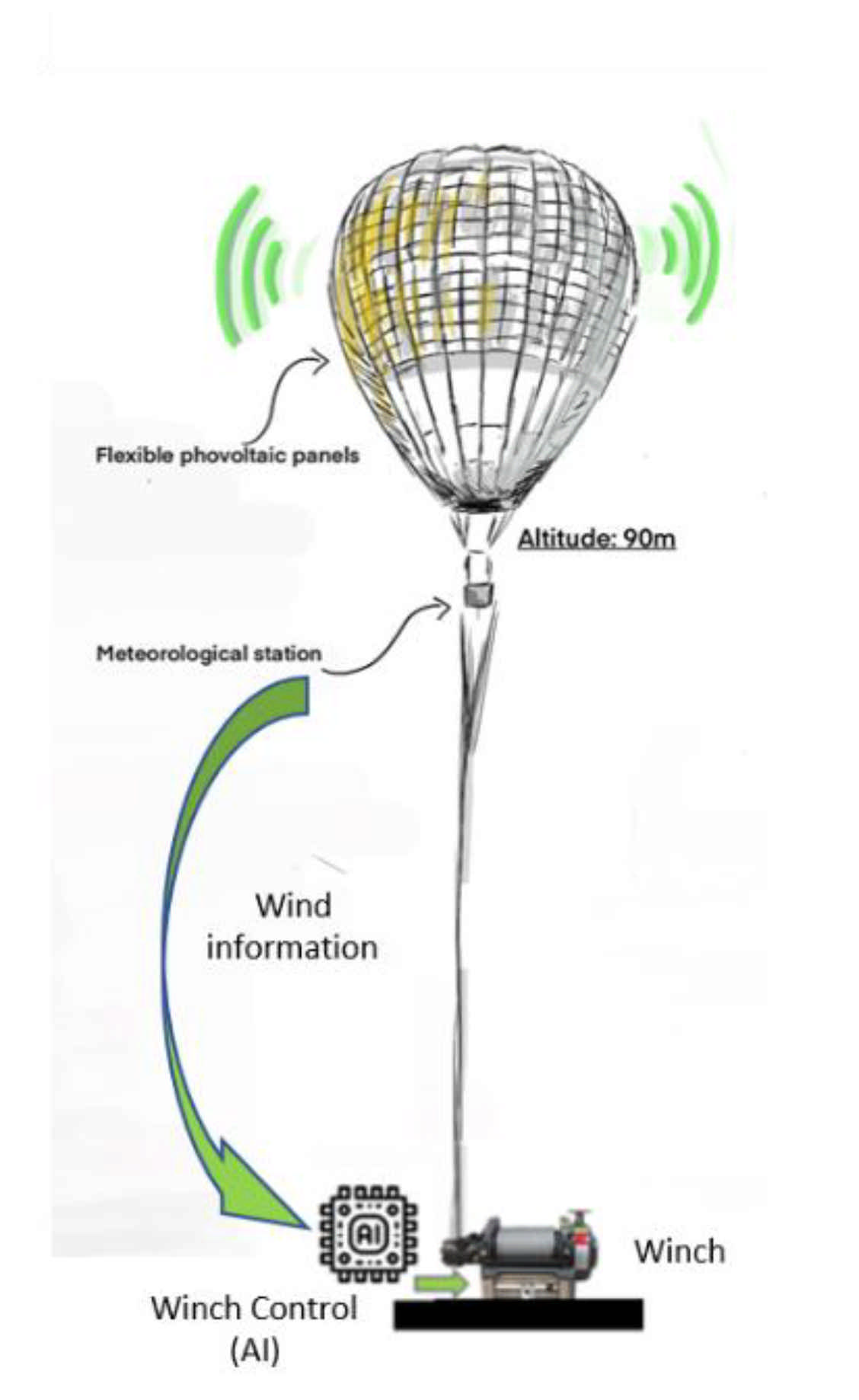
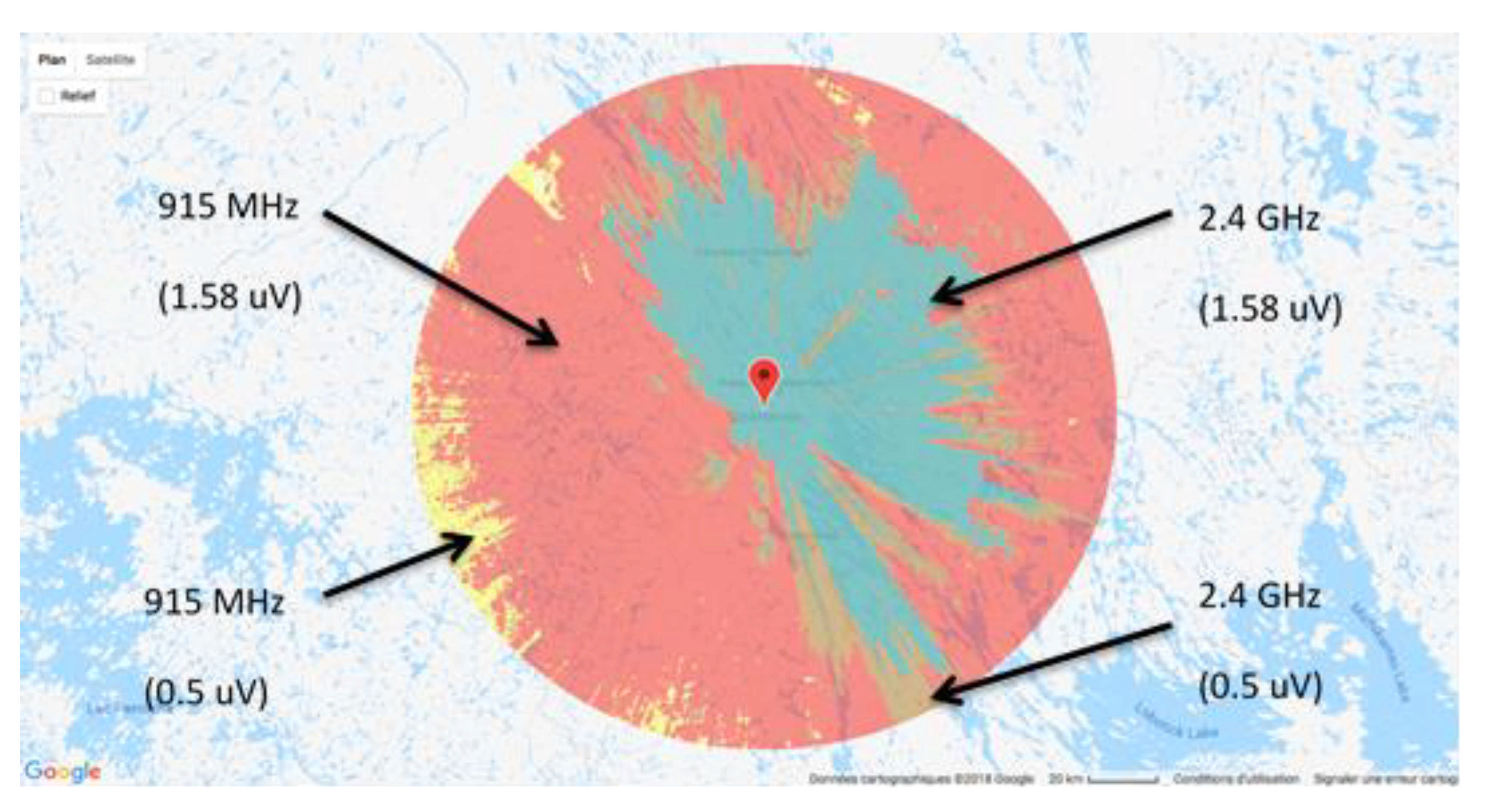
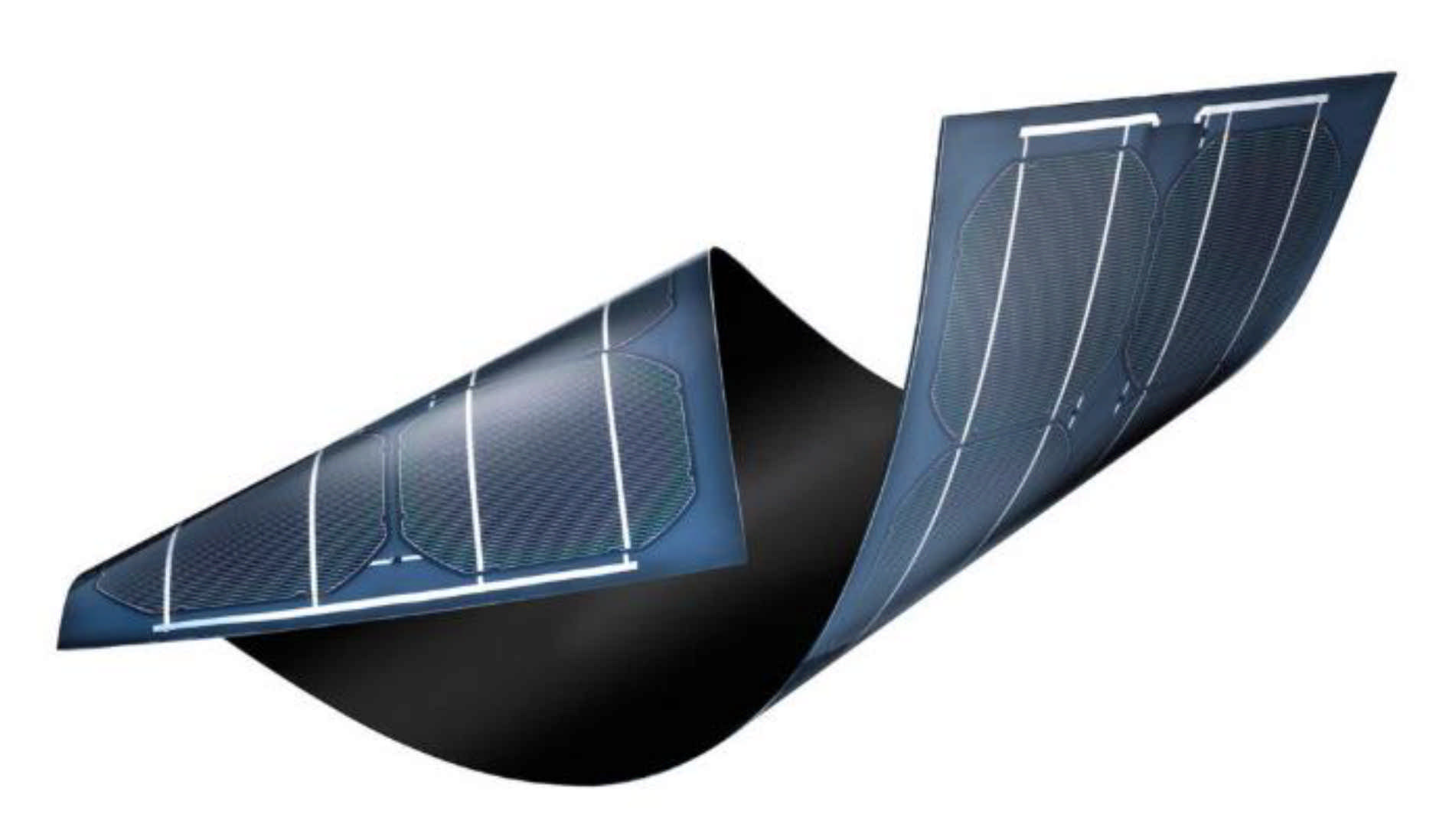
| Coarse WDM | Dense WDM | Ultra-Dense WDM | |
|---|---|---|---|
| Number of wavelengths | <17 | 8 to 128 | >400 |
| Channel spacing | 20 nm to 25 nm | 0.4 nm to 1.6 nm | 0.08 nm |
| Spectral width | 1260 nm to 1620 nm | 1500 nm to 1600 nm | 1500 nm to 1600 nm |
| Flow by wavelength | 1.25 to 2.5 Gbits/s | 10 Gbits/s to 40 Gbits/s | >40 Gbits/s |
| Electrical Supply | Acclimatization Depending on Weather Conditions | Radio Coverage | Cost of the System | Deployment Time | |
|---|---|---|---|---|---|
| Telecommunication towers | C | B | B | D | D |
| Optical fiber | C | A | C | E | E |
| The balloons | A | C | A | B | B |
| The drones | D | E | B | B | A |
Publisher’s Note: MDPI stays neutral with regard to jurisdictional claims in published maps and institutional affiliations. |
© 2021 by the authors. Licensee MDPI, Basel, Switzerland. This article is an open access article distributed under the terms and conditions of the Creative Commons Attribution (CC BY) license (https://creativecommons.org/licenses/by/4.0/).
Share and Cite
Ferrier, L.; Ibrahim, H.; Issa, M.; Ilinca, A. State of the Art of Telecommunication Systems in Isolated and Constrained Areas. Sensors 2021, 21, 3073. https://doi.org/10.3390/s21093073
Ferrier L, Ibrahim H, Issa M, Ilinca A. State of the Art of Telecommunication Systems in Isolated and Constrained Areas. Sensors. 2021; 21(9):3073. https://doi.org/10.3390/s21093073
Chicago/Turabian StyleFerrier, Laurent, Hussein Ibrahim, Mohamad Issa, and Adrian Ilinca. 2021. "State of the Art of Telecommunication Systems in Isolated and Constrained Areas" Sensors 21, no. 9: 3073. https://doi.org/10.3390/s21093073
APA StyleFerrier, L., Ibrahim, H., Issa, M., & Ilinca, A. (2021). State of the Art of Telecommunication Systems in Isolated and Constrained Areas. Sensors, 21(9), 3073. https://doi.org/10.3390/s21093073








